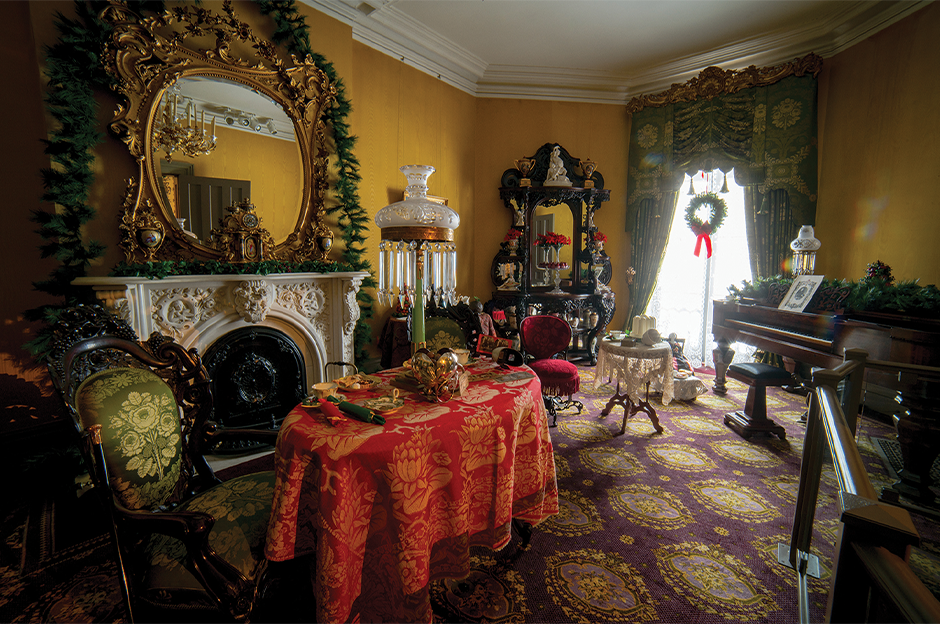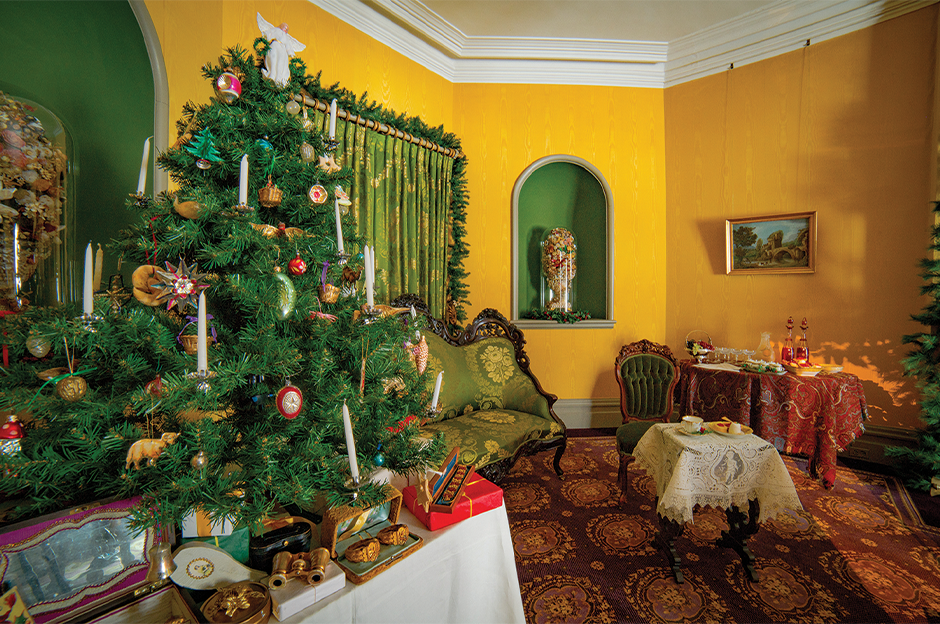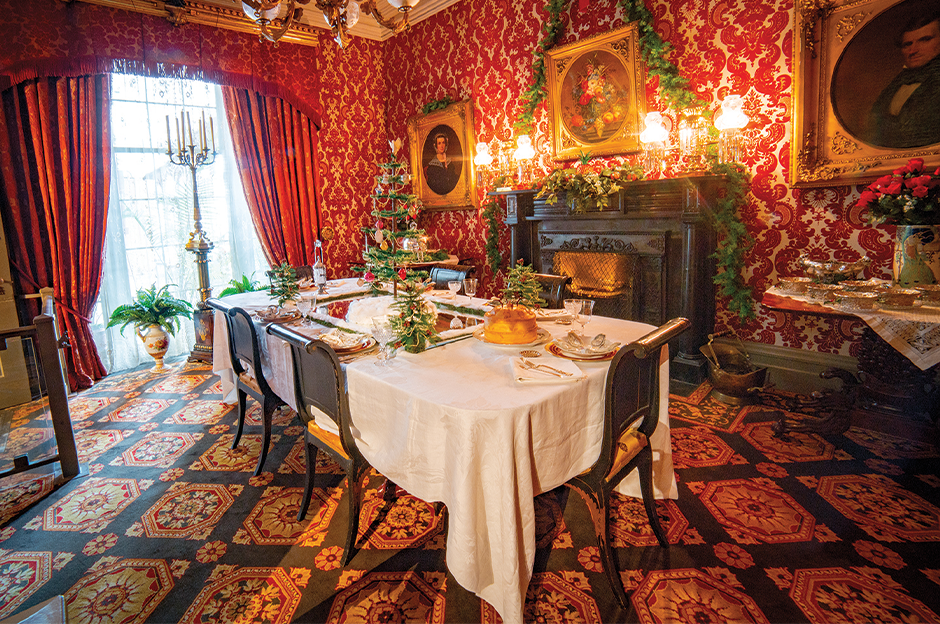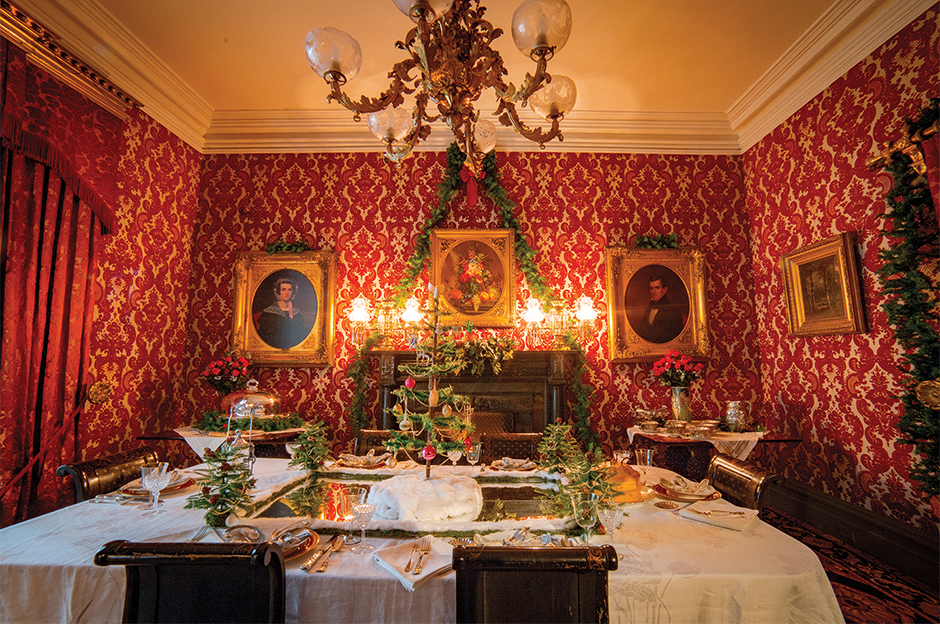Celebrate the holiday season with a family visit to Fountain Elms. The dining room, parlor, bedroom, and library period room settings showcase Christmas traditions introduced to Utica by immigrants from the British Isles, Germany, Poland, and Italy. The Victorian Yuletide exhibition, which opens Friday, November 24, highlights different days throughout the Christmastide season—from Christmas Eve to Epiphany (January 6)—observed by each of these groups.
The dining room is set with the finest china and flatware from the Museum’s collection for Wigilia [Vee-ghee-lee-uh] or vigil, an elaborate Christmas Eve dinner in Polish households. The hostess sets an extra place at the table in the hope that Christ, in the form of a stranger, will join the family for dinner. This tradition celebrates hospitality and inclusion for an “unexpected guest.”
The parlor highlights German Christmas day customs. In the Middle Ages, Saint Nicholas, or Sankt Nikolaus, traveled with a partner, Belsnickel, a grouchy-looking man dressed in ragged, dirty clothes who wore a mask or ashes on his face. He serves as a disciplinarian with his switch, ready to punish bad children, or at least frighten them into good behavior. Featured in the parlor are the mask of Belsnickel, the Advent wreath, with its candles that count down the weeks to Christmas, and the Christmas tree (Tannenbaum in German), traditionally decorated with apples, gingerbread cookies, pretzels, and red tissue paper roses.
The bedroom pays homage to Christmastide festivities observed by immigrants from England, Ireland, Scotland, and Wales from Boxing Day, December 26, through New Year’s Day. During Advent, Anglican parishes displayed a box into which churchgoers put their monetary donations. The legend of Boxing Day has it that on the day after Christmas, the boxes were broken open and their contents distributed among the poor. Objects from the Museum’s permanent collection depicting the completion of the Erie Canal, built by Irish, Welsh, and German immigrants, are on view to celebrate the bicentennial of this engineering marvel.
The library highlights Epiphany traditions that Italians brought to America. Strictly from a religious standpoint, La Festa dell’Epifania commemorates the 12th day of Christmas when the Wise Men arrived at the manger bearing gifts for baby Jesus. For Italian children, it was the day when they finally received their holiday treasures. In Italian folklore, LaBefana is a witch who brings treats on the morning of January 6 to good children or charcoal to the naughty. A 19th-century Nativity scene, known in Italy as a presepe, is also on exhibit.
The Victorian Yuletide exhibition is free and open to the public and will remain on view through December 31.






